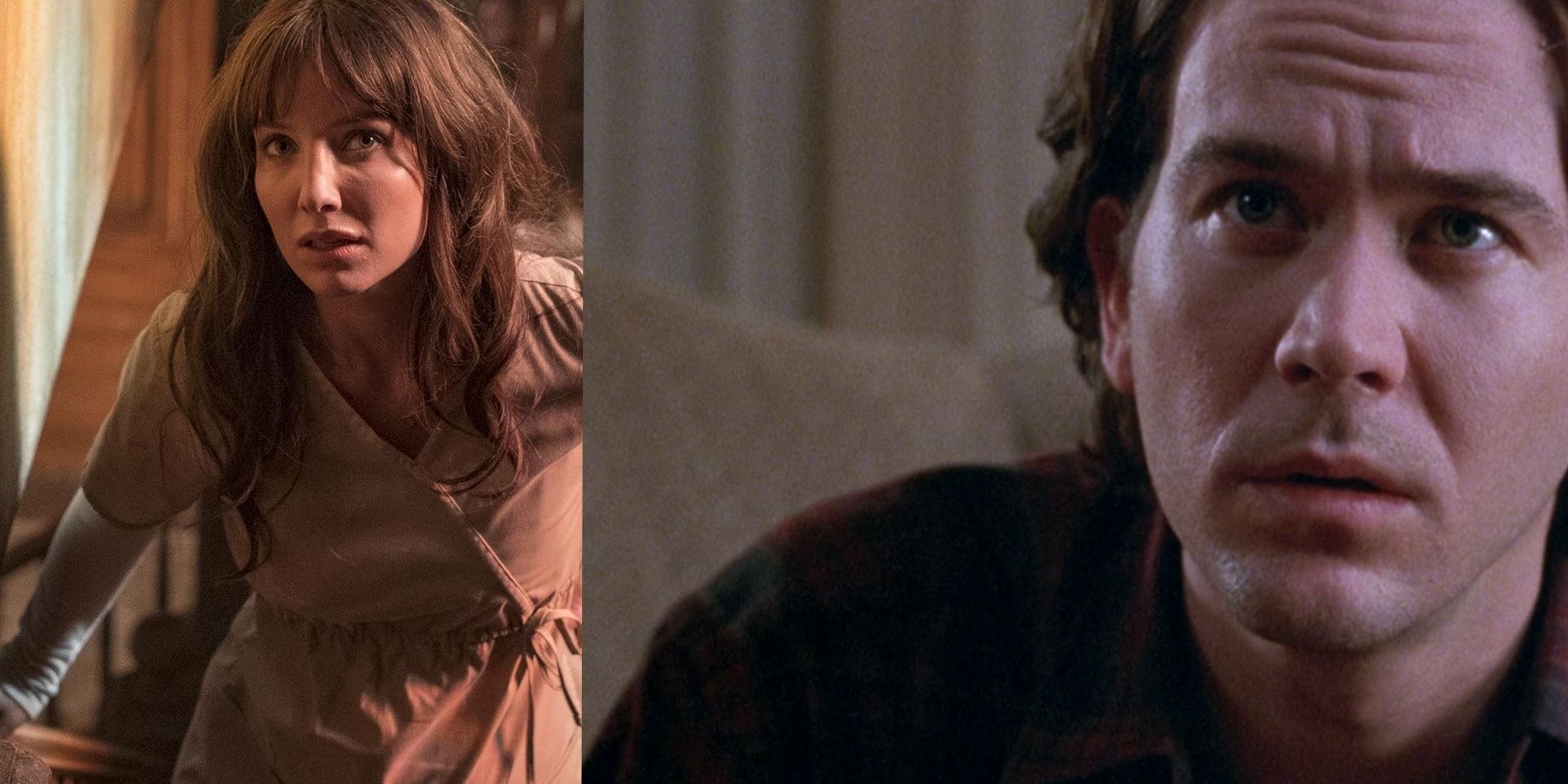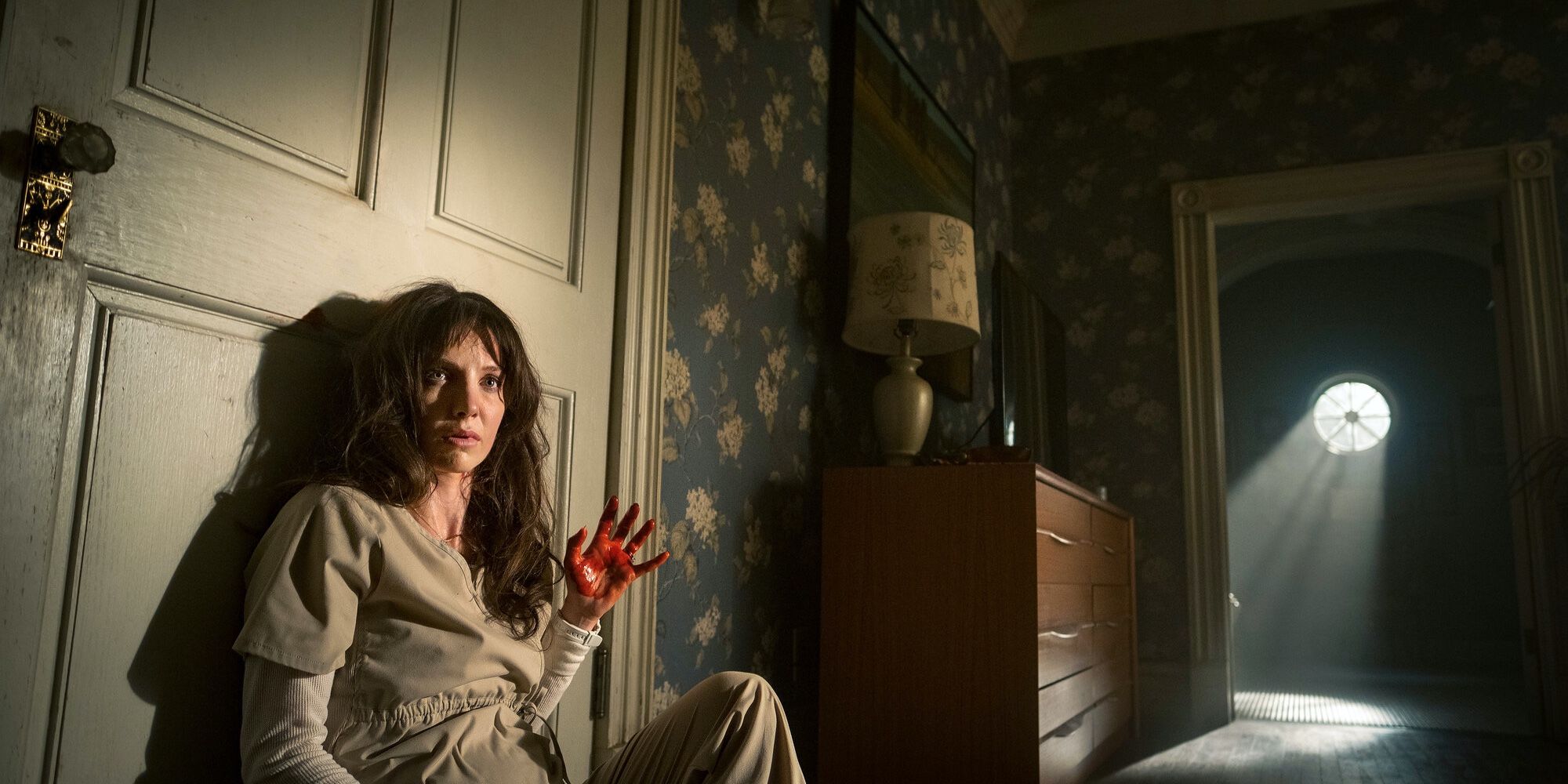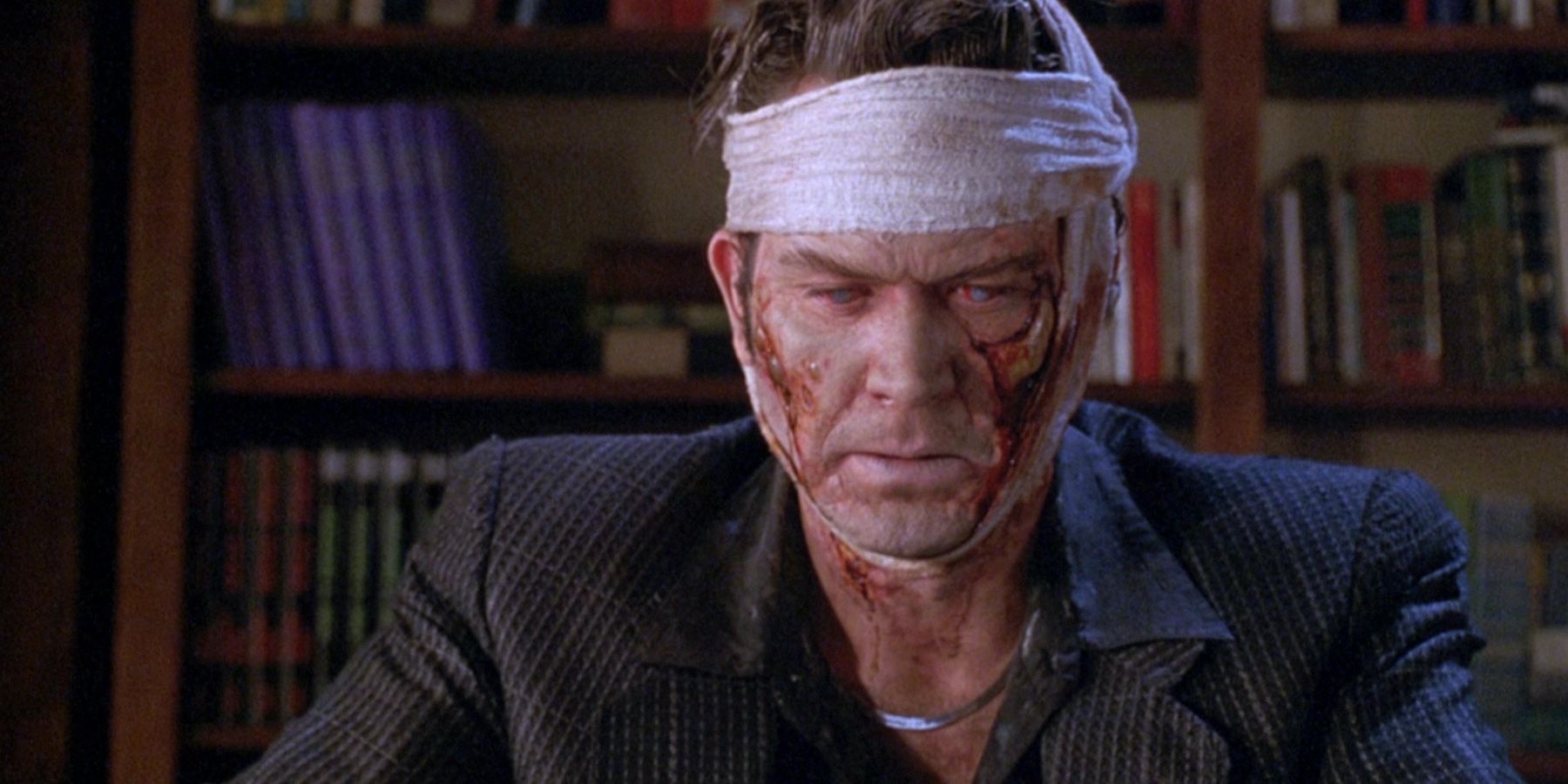It was hard not to get excited when it was announced that James Wan (Saw, The Conjuring) was back in the horror game with his upcoming film Malignant. Coming off of The Conjuring universe, a fun but rather monotonous franchise, it was time for a new horror series to emerge. Sadly, although Malignant is a fun and gore-heavy watch, the premise is not unique and uses special effects in place of a more cohesive storyline.
Malignant is highly similar to Stephen King’s The Dark Half, a story about a writer named Thad (Timothy Hutton) who writes under the pen name George Stark. After disturbing things begin to happen around him, he discovers he had a parasitic twin removed as a young boy. The 1989 book was adapted into the 1993 George A. Romero film The Dark Half. The Dark Half has what Malignant lacks: character development, an extensive plot, and an actual shocking ending.
Malignant is about Madison (Annabelle Wallis), a woman who begins to experience intense and scaringly vivid dreams. After a confusing and relatively flat 2 hours in the film, Madison learns that she was born with a parasitic twin and removed it as a young girl before getting adopted at eight years old. Whereas The Dark Half goes beyond this point, delving into Thad’s mind and heightening paranoia, Malignant doesn’t really go anywhere from the simple premise; it falls astray.
Malignant starts in an already rather tacky and overly gory scene. Madison is thrown against the wall by her abusive husband, Jake (Derek Mitchell), blood splattering all over the wall. Her husband is discovered dead the following day, and Madison is a quick suspect because she somehow knew the details of how he died before it was reported. When questioned, she makes bizarre claims: she saw him die in her dreams and saw the killer- a faceless entity- but is not responsible for his death. After a series of senseless bloody and somewhat repetitive murders occur, it is later revealed that she, too, had a parasitic twin removed. It is that twin that is committing the murders. In contrast, Madison has no recollection of the murders at all.
The sleep paralysis scenes in which Madison experiences aren’t revolutionary, but that doesn’t mean they aren’t riveting to watch. Madison is stuck in her dreams, with James Wan’s disorienting camera work, making the spectator feel like they are in the hellish nightmare with her. She is paralyzed stuck, unable to move, but watches each relentless murder take place, yet never gets a glimpse of the face. The only evidence is his weapon: a medical trophy that Madison won. Every murder abruptly ends with Madison waking up from her nightmare, screaming in utter terror.
In The Dark Half, the plot doesn’t simply revolve around Thad’s friends and acquaintances continuing to die. When everyone starts to point at Thad, he claims it is the physical entity of George Stark, his fictional alter-ego, doing the murders. In Malignant, it is honestly pretty predictable that Madison is most likely involved in the killings. When the monster is revealed as her parasitic twin, the shock isn’t really there.
Similar to The Dark Half, Madison begins to claim it is also a bit of an alter-ego who committed the murders as well. She keeps saying the faceless man’s name is Gabriel, but it isn’t until her mother hears that name and sends chills down her spine that the audience learns who Gabriel is right along with Madison. Madison’s mother shows her childhood videos of her talking to her imaginary friend Gabriel. Gabriel isn’t an ordinary imaginary friend, though; Madison seems rather frightened of him. It turns out she was adopted after getting intense brain surgery to remove a parasitic twin from her head. What did she call this twin? Gabriel.
Even though the films have almost identical premises, the stories behind each film are entirely different. The Dark Half was based on Stephen King’s pseudonym he wrote under Richard Bachman, who he used to write darker, more sinister stories. The Dark Half was his way of unleashing his alter-ego. Malignant came out of an idea from Wan’s wife and screenwriter, Ingrid Bisu: "My wife, Ingrid, she does a lot of research into medical anomalies. She goes ‘There are people that are afflicted by this thing, that were born like this.' I just thought, wow. So obviously, my horror movie-f---ed mind went immediately to the most messed-up story I could come up with. Her and I, we just started spitballing ideas, and [it] eventually snowballed into a concept.”
What Malignant can be praised for is its use of old-school scares and impressive fight and murder scenes. In a specific scene where Madison is in a jail cell because she was committed for the murders, everything comes to fruition in a jaw-dropping and amazingly gory scene. Gabriel’s face is revealed rising out of Madison’s head, with his razor-sharp teeth and bloody face, genuinely looking like a devil forming out of someone’s insides. He continues to kill every single woman in the jail cell brutally. Malignant is also successful and unique in the way that it had an old-fashioned horror feel that hasn’t been seen in years: Dark rooms, creepy sounds during the night, creaky stairs, and flickering lights. This can be seen in late-night scenes when Madison is alone in her house.
Malignant is relatively straightforward, with the monster being the actual twin. The killer said to be the physical embodiment of a fictional character in The Dark Half still leaves the mystery up to interpretation. Is George Stark an evil spirit with its own identity, or is it Thad himself, being part of an alternate personality? In The Dark Half, the viewer has no idea if Thad is correct about Stark being the murderer, as they are going through the mystery untangling together.
In the end, Malignant is basically a remake of The Dark Half, minus the interesting aspects. The film focuses on an overall haunting, and eerie atmosphere yet lacks in the actual plot. Both Malignant and The Dark Half are interesting takes on how a parasitic twin can haunt someone decades later, but Malignant stays in this lane the whole time.
In George A. Romero’s The Dark Half, Thad doesn’t want to be a murderer, and neither does the audience. Thad’s character is written out as a stubborn, a bit childish, and tortured soul. Malignant doesn’t let the audience build relationships with the characters entirely, though. The film is too busy killing characters before being barely introduced, and the characters the audience does know are surface level. Madison isn’t the most versatile character; she plays out as the heroine of the horror film, but she is written out as a troubled woman with not much else going for her. Madison seems more like a character to be the center of shock, scares, and gore, yet not much of a person herself, and that is where the issue with Malignant lies.



